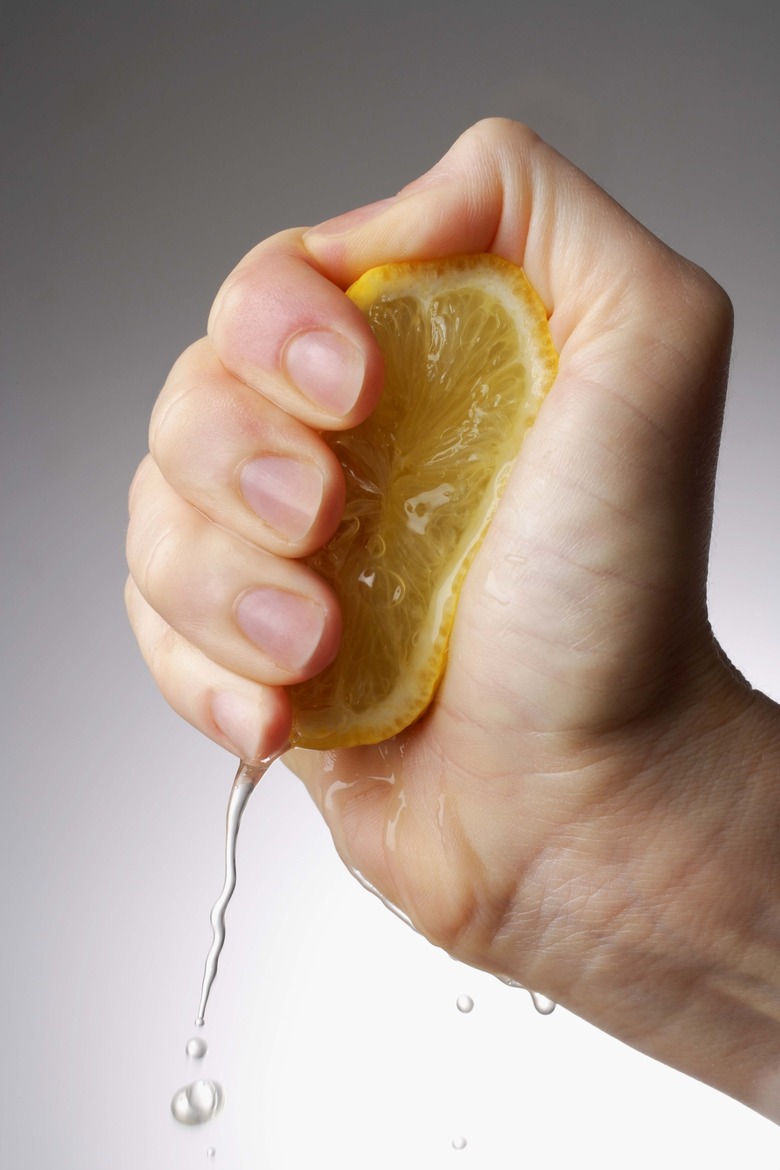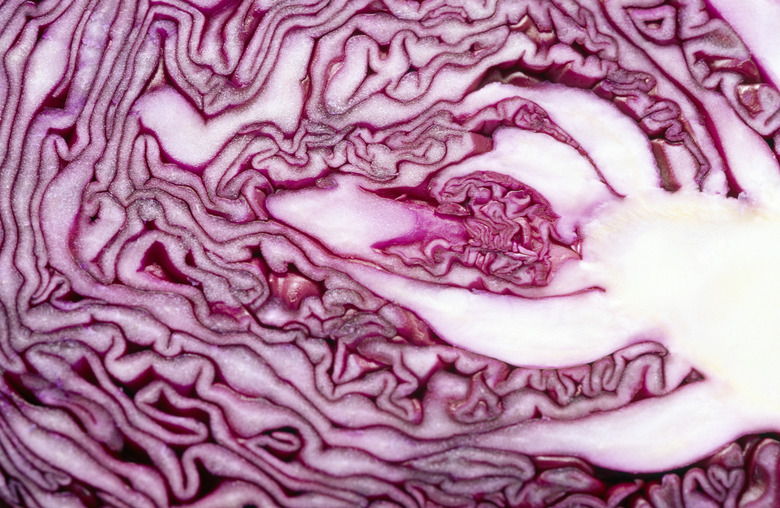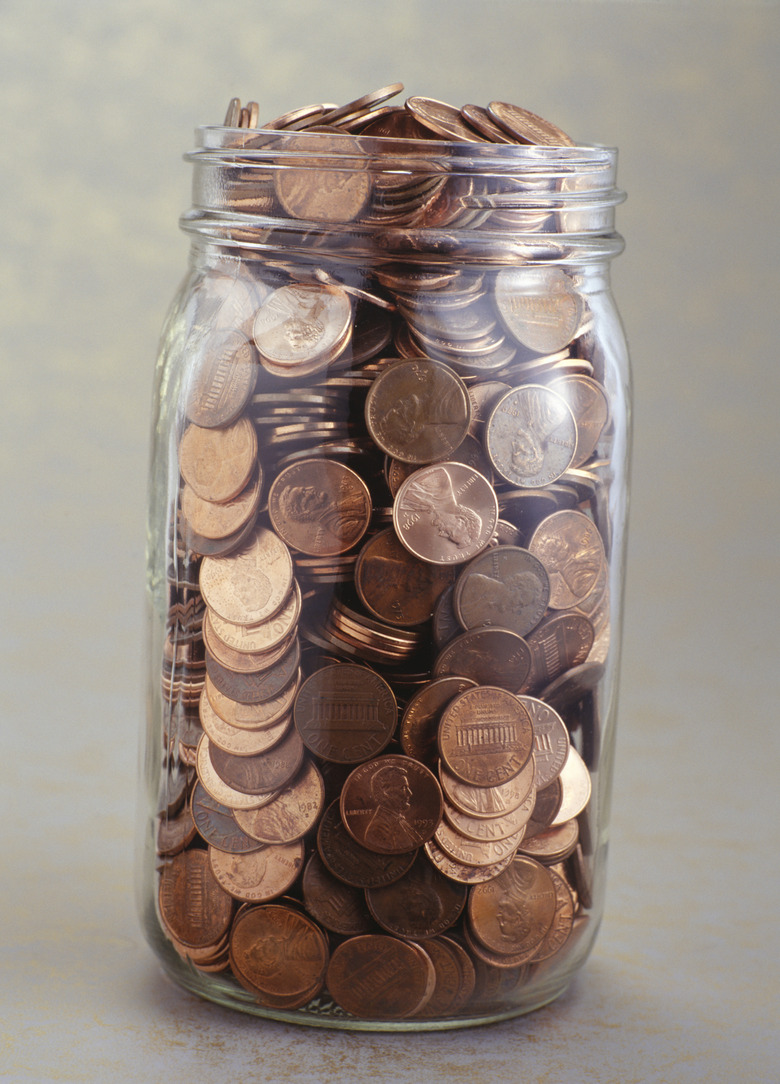Chemistry Projects With Lemon
When you think of lemons, you think of sour. That's because lemon juice is very acidic. It has a pH of around 2 on a scale that measure acidity or alkalinity from 0 to 14. 100 grams of lemon juice — the juice of two good sized lemons — has approximately 7 g citric acid, 220 mg of malic acid and 45 mg of ascorbic acid, or vitamin C. You can learn about the properties of lemon juice through some simple experiments.
Create Your Own Tools
Create Your Own Tools
A simple experiment that enables you to create your own test equipment involves lemons and cabbages. While you can test the pH of lemon juice with pH strips, you can make your own with red cabbage juice. Blend 1 cup of chopped cabbage and 1 cup of water and then strain the juice. Soak strips of coffee filter in the juice and let them air dry. Dip the strips in lemon juice and observe as they turn a deep pink.
Secret Agent Basics
Secret Agent Basics
Lemon juice acid creates the perfect tool to write a secret message. Dip a cotton swab in lemon juice and write a message on paper. When the juice dries, you will not be able to see the message. To reveal the message, hold the paper near a bare incandescent light bulb. The acid compounds in the lemon juice will oxidize and turn brown before the paper starts to burn.
Fizzy Lemon Suds
Fizzy Lemon Suds
Use lemon juice to create a bubbly mixture that displays the concept of two compounds reacting. Mix 1 tablespoon baking soda and 1 teaspoon dish soap in a drinking glass. Add a mixture of 1 tablespoon lemon juice and 2 tablespoons water. Stir and stand back. When the acidic lemon juice and basic baking soda mix, they give off carbon dioxide gas bubbles that create a lovely frothy mess. Add fruit or vegetable juices such as blueberry, cherry, carrot or beet for a colorful experience.
Preserving Fruit
Preserving Fruit
Display the special ability lemon juice has to prevent reactions. Cut two slices from an apple. Coat one with lemon juice. Let them both stand and see what happens. The apple without lemon juice will turn brown, but the one with lemon juice will not. The brown color comes from chemicals called polyphenols reacting with oxygen. The vitamin C in the lemon juice, an antioxidant, blocks that reaction. Many fruits can be treated this way prior to processing to help preserve color and flavor.
Cleaning a Penny
Cleaning a Penny
Watch the acidity in lemon juice clean and age copper pennies. Make a solution of lemon juice, water and salt. Soak some dirty, brown pennies in it for about five minutes. Put some of them directly on a paper towel to dry, and rinse the others well in water first. The rinsed ones will now be clean a shiny, while the pennies you didn't rinse will turn blue-green.
Lemon Battery
Lemon Battery
With three lemons, four pieces of insulated copper wire (2 inches stripped from each end) and three galvanized nails, create a lemon battery with enough power to light an LED bulb or run a small digital clock. Pierce the lemons with a copper wire and galvanized nail in each lemon, making sure they don't touch inside the lemon. Connect the free end of the copper wire in one lemon to the nail in the next lemon. Connect the free end of the copper wire in that lemon to the nail in the third lemon. Connect the last piece of wire to the galvanized nail in the third lemon. The three-lemon battery will generate over 2 V between the two free ends of copper wire.
Cite This Article
MLA
Ph.D., Ariel Balter,. "Chemistry Projects With Lemon" sciencing.com, https://www.sciencing.com/chemistry-projects-lemon-22317/. 24 April 2017.
APA
Ph.D., Ariel Balter,. (2017, April 24). Chemistry Projects With Lemon. sciencing.com. Retrieved from https://www.sciencing.com/chemistry-projects-lemon-22317/
Chicago
Ph.D., Ariel Balter,. Chemistry Projects With Lemon last modified August 30, 2022. https://www.sciencing.com/chemistry-projects-lemon-22317/


